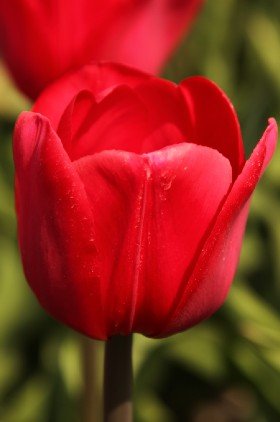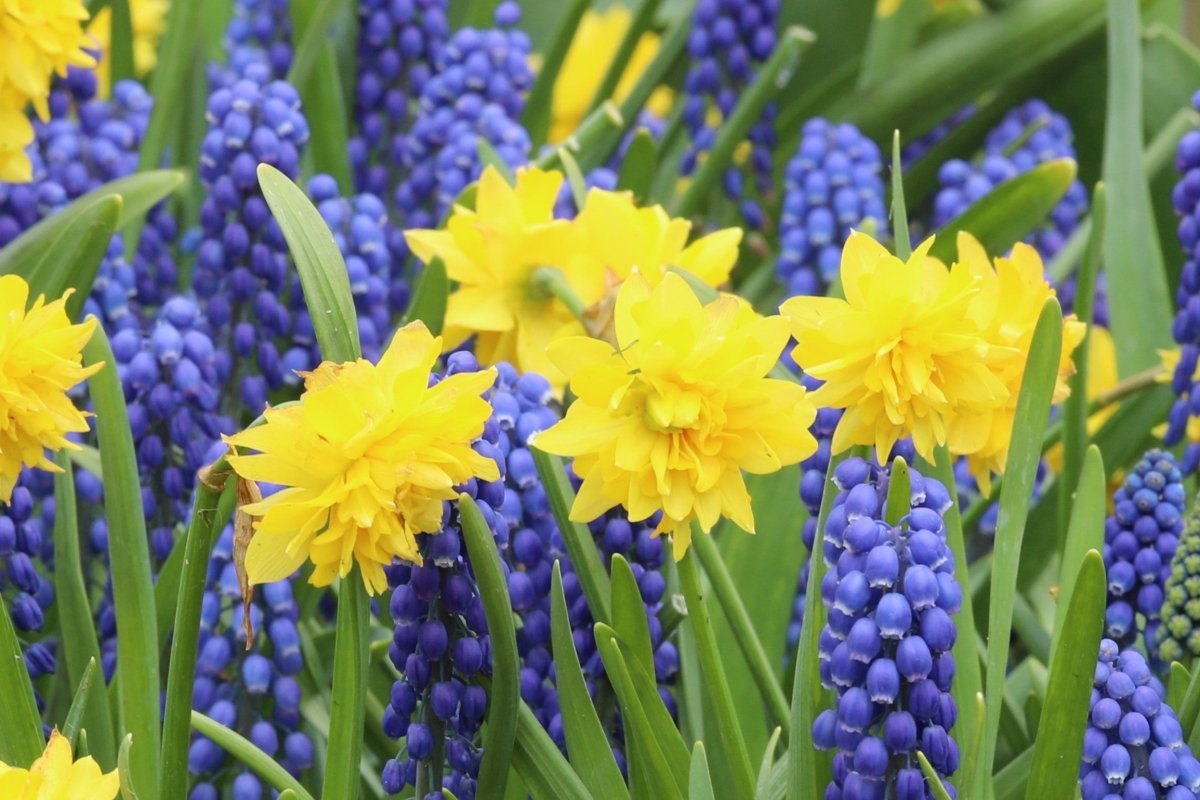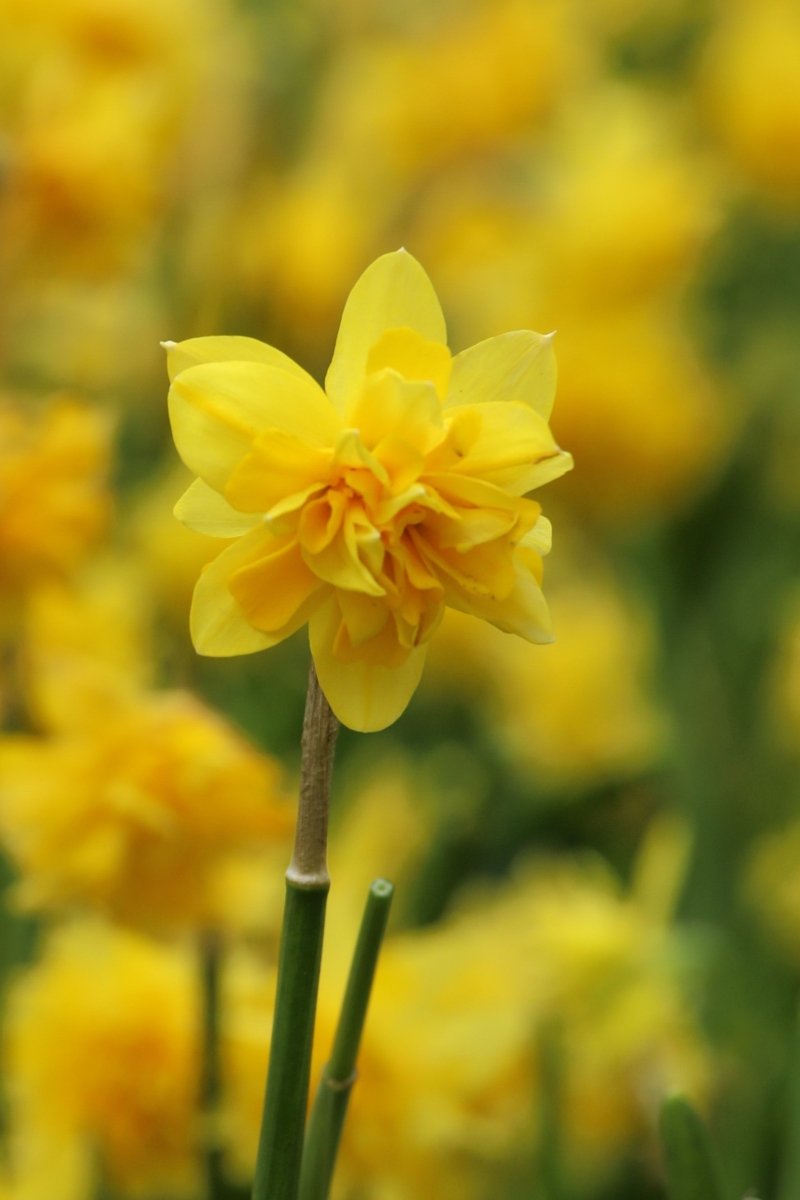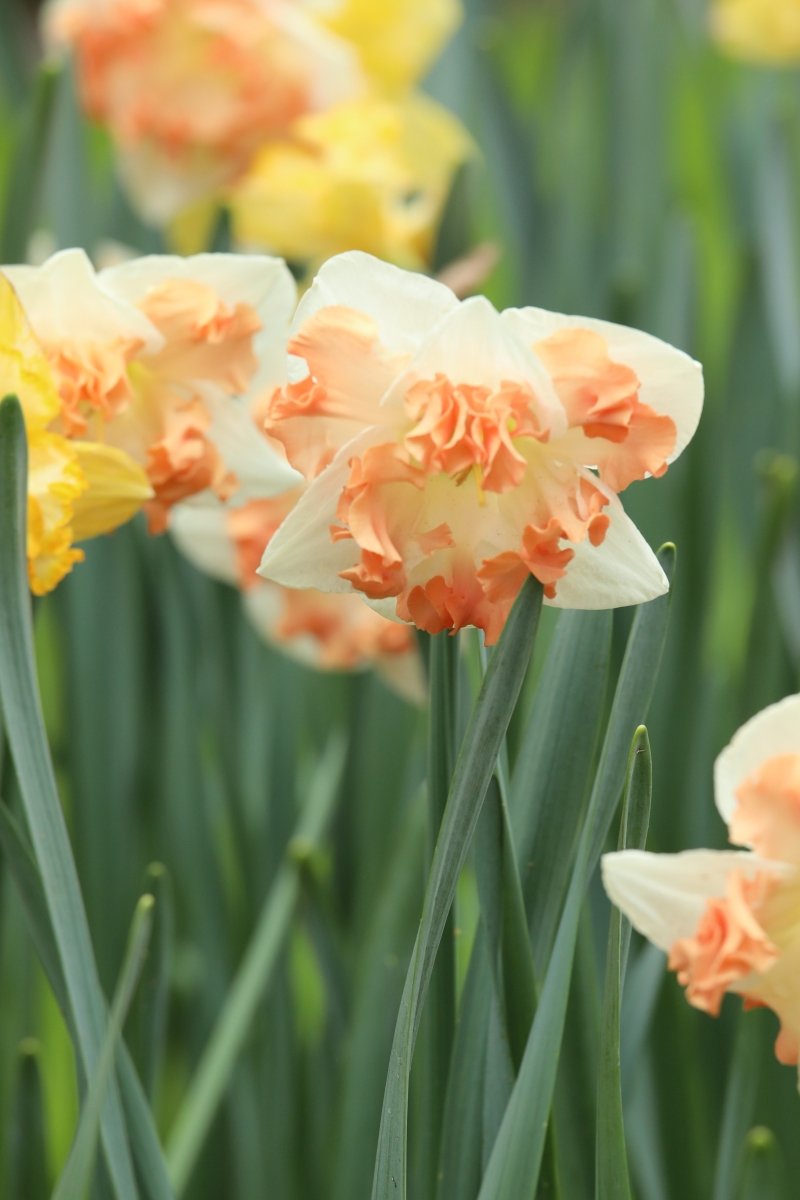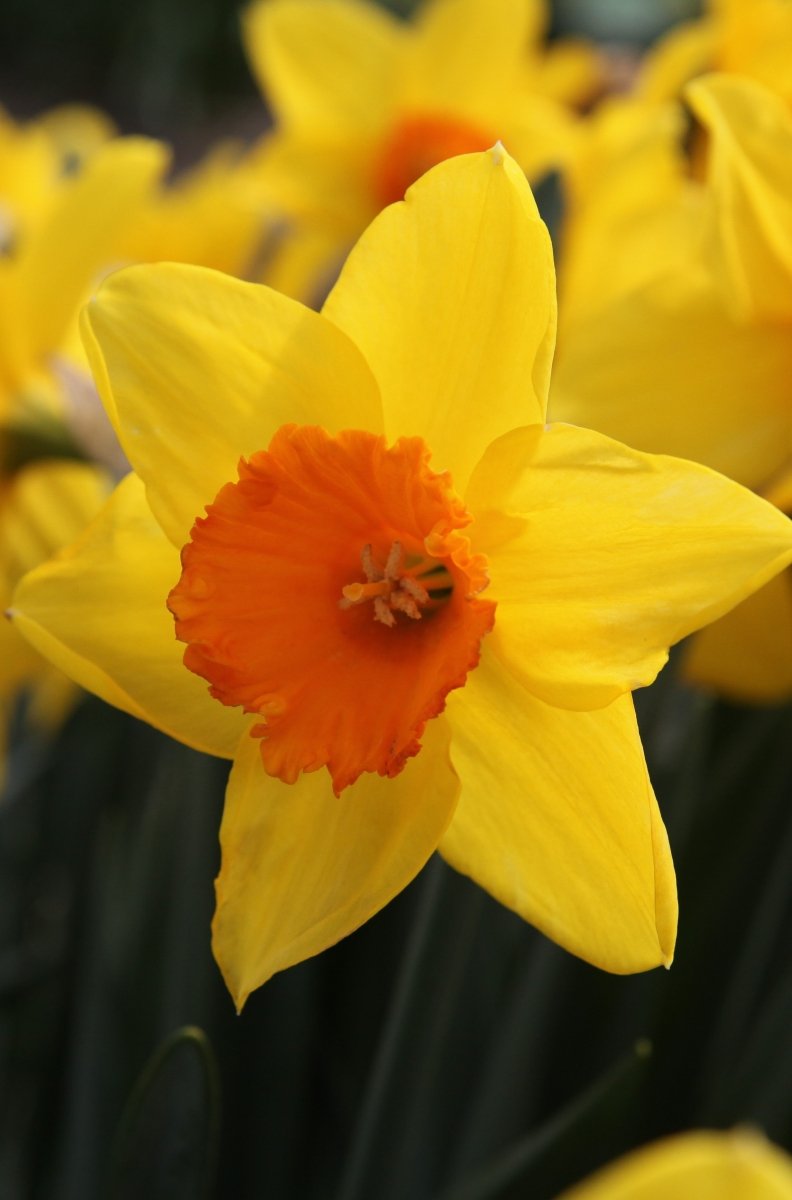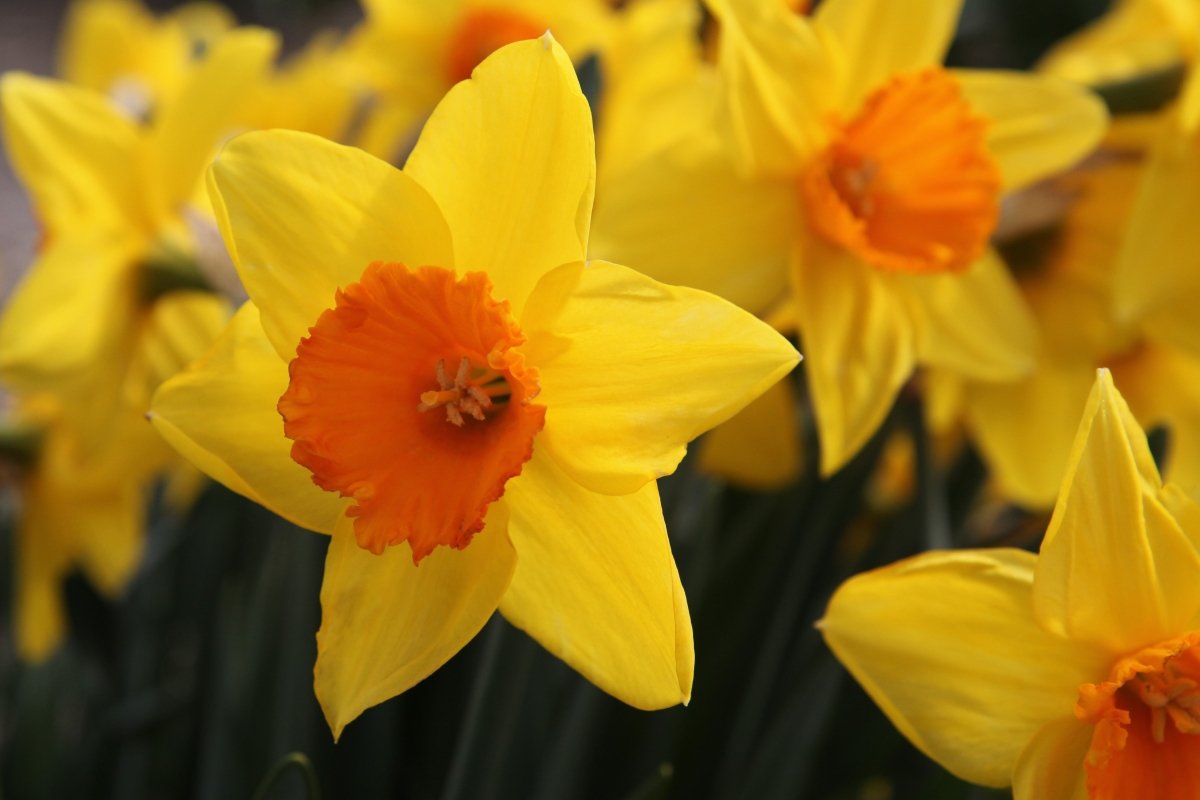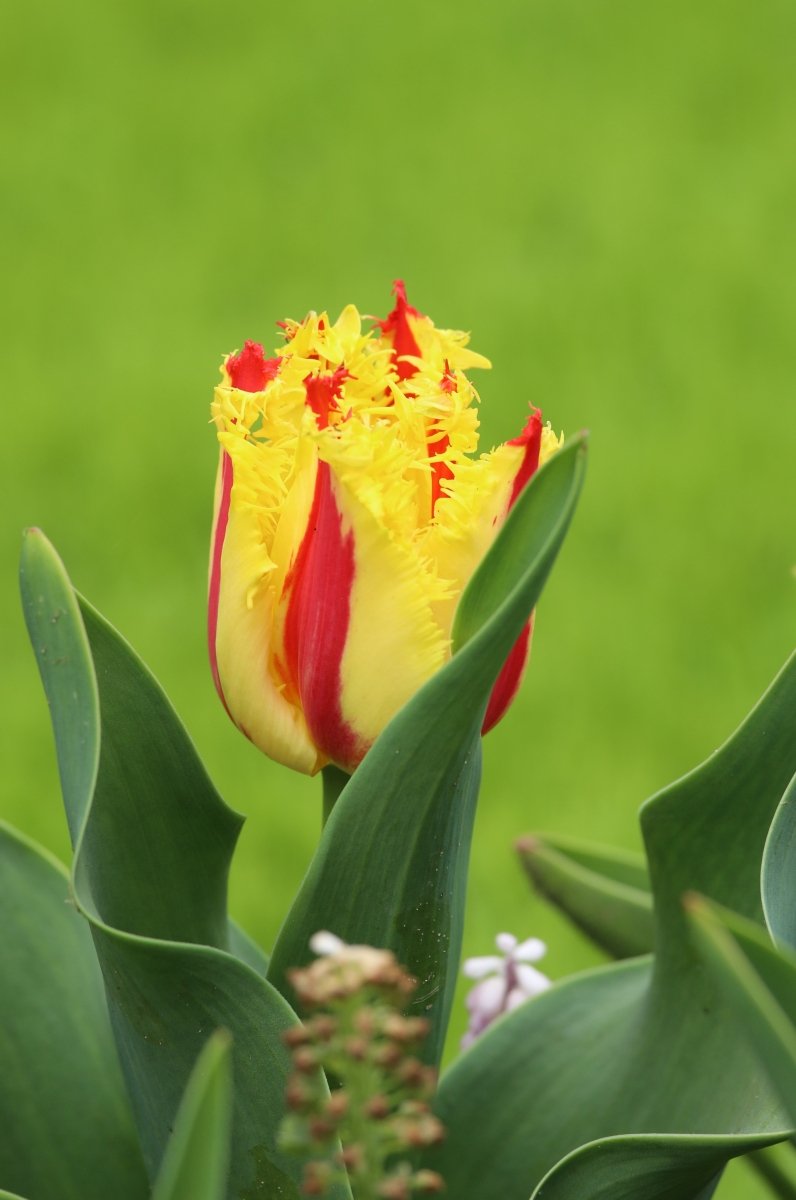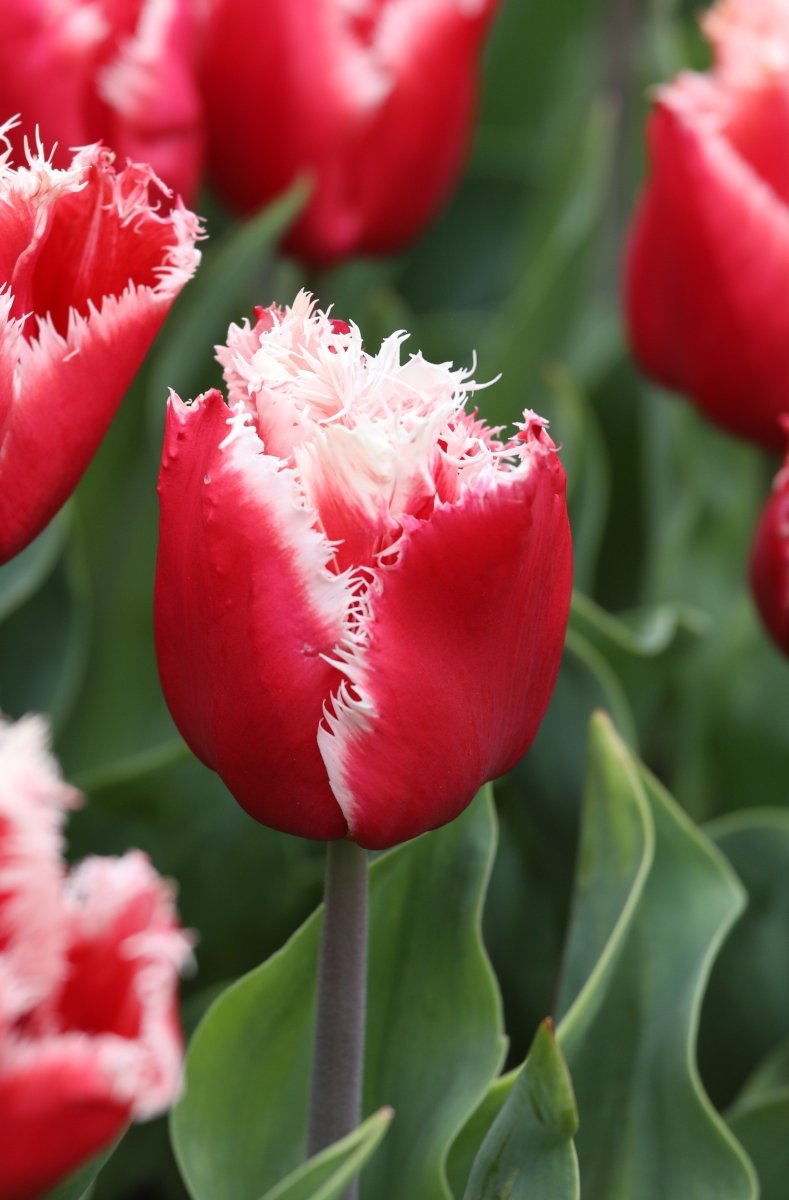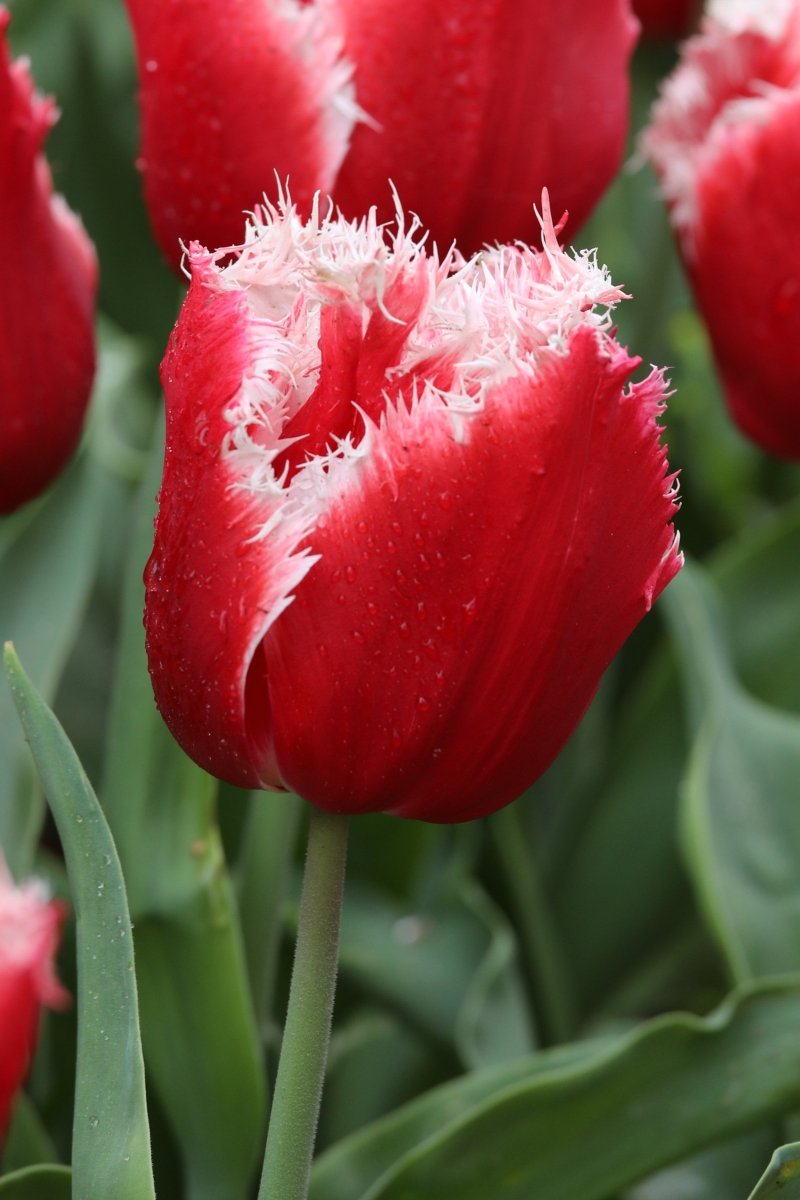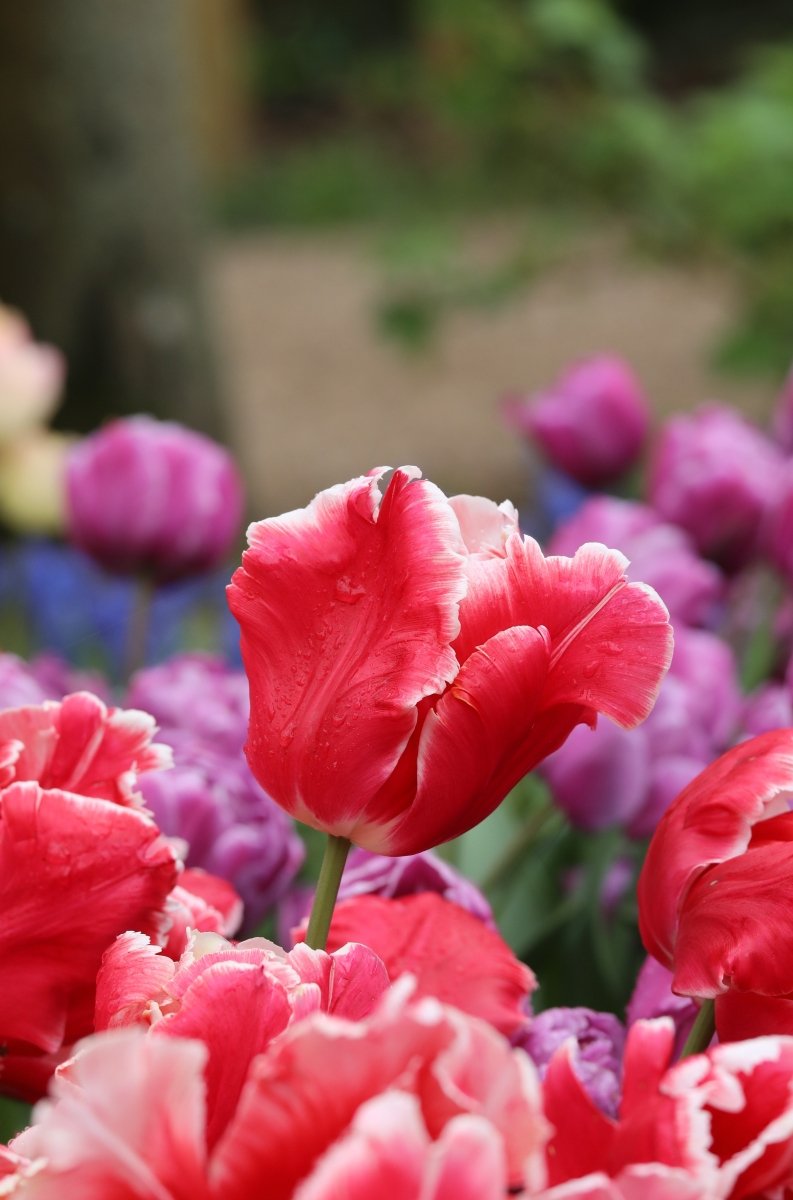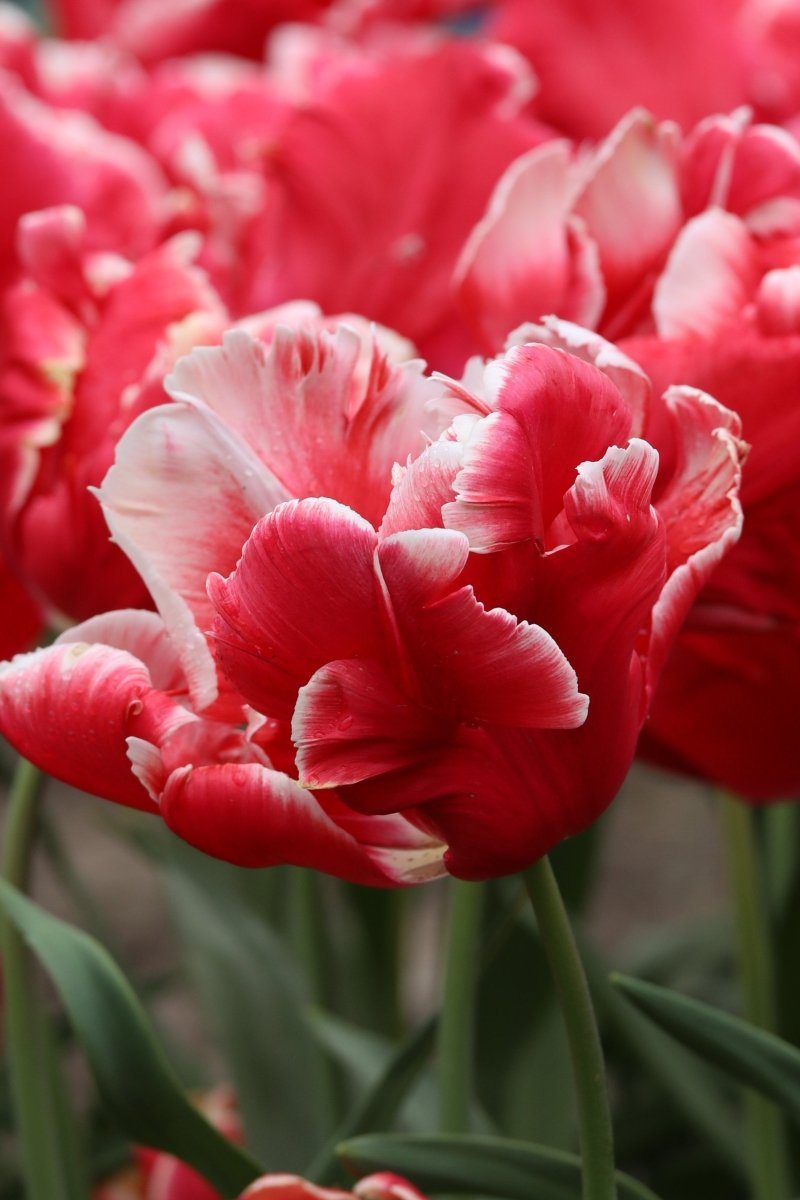Explore the Fall Planted collection - Spring Flowering bulbs
Sort by:
About Marie Jo
Introducing the Tulip Marie Jo: elevate your garden with the timeless beauty of the Tulip Marie Jo. This vibrant bulb promises to bring a burst of color and elegance to your outdoor space.
- Vibrant hues: Marie Jo has a bright yellow color, and looks attractive.
- Sturdy growth: robust stems ensure that the Tulip Marie Jo stands tall and graceful in various weather conditions.
- Early bloomer: be greeted by early spring blooms, signaling the arrival of the gardening season.
- Versatile planting: ideal for borders, containers, or cutting gardens, adding a touch of sophistication wherever it's planted.
- Perennial charm: enjoy the beauty of Marie Jo year after year, as it returns each spring with renewed vibrancy.
How to plant and take care of Tulip Marie Jo
- Planting depth: place bulbs 4-6 inches deep in well-drained soil.
- Sunlight: choose a sunny location for optimal blooming; ensure the bulbs receive at least 6 hours of sunlight daily.
- Watering: keep the soil consistently moist but not waterlogged during the growing season.
- Fertilization: apply a balanced fertilizer in early spring when shoots emerge.
- Post-bloom care: deadhead spent flowers to redirect energy into bulb growth; allow foliage to wither naturally.
About Love Valley
Meet Tulip Love Valley – the flower that paints your garden with love. With its beautiful colors and soft petals, it's like a little love note from nature. Simple yet stunning, these tulips bring the magic of love right to your backyard.
- Romantic palette: blossoms showcase a captivating blend of deep reds.
- Hardy blooms: sturdy petals endure various climates, ensuring a lasting display of affection.
- Easy maintenance: thrives in well-drained soil, requiring minimal effort for maximum impact.
- Versatile planting: ideal for gardens, borders, or pots, offering flexibility in landscaping design.
- Seasonal elegance: Spring heralds the arrival of these blooms, bringing a touch of love to your outdoor space.
How to plant and take care of Love Valley
- Planting depth: place bulbs 4-6 inches deep, ensuring proper insulation against extreme weather.
- Sunlight: optimal growth with at least 6 hours of sunlight daily.
- Watering: maintain moderate soil moisture, avoiding waterlogged conditions.
- Fertilization: apply a balanced fertilizer in early spring for nourished and vigorous growth.
- Post-blooming care: allow foliage to wither naturally for energy replenishment before pruning.
About Dream Club
We’re dreaming about this gorgeous Dream Club tulip. Add a touch of magic and elegance to your outdoor space with these stunning blooms. With their captivating colors and graceful presence, these tulips are a dream come true for any gardening enthusiast. Read on for more information.
- Bursting with a stunning array of hues, from vivid pink to delicate whites
- Each bulb is carefully selected for its robustness and guaranteed to bloom into a dazzling flower
- Ideal for both novice and experienced gardeners, requiring minimal maintenance
- Perfect for creating stunning floral arrangements or adding a touch of elegance to any landscape
- Long-lasting blooms that bring joy and beauty to your outdoor space
How to plant and take care of Dream Club
- Choose a well-drained location that receives at least six hours of sunlight daily
- Dig a hole, approximately 6 inches deep, and place the bulb with the pointed end facing up
- Cover the bulb with soil and water thoroughly to settle the soil
- Water regularly but avoid overwatering to prevent bulb rot
- Apply a balanced fertilizer during the growing season to promote healthy growth
- Remove faded flowers to encourage the plant to focus its energy on producing more blooms
- In colder climates, provide a layer of mulch to protect the bulbs during winter
About Invader
Join the Tulip Invader revolution and let your garden become a battleground of colors and rebellion. Plant them, watch them grow, and marvel at the majestic invasion! This tulip is your garden’s colorful rebel.
- Vibrant Variety: The Tulip Invader will invade your garden with a riot of colors, from bold reds to sunny yellows and delicate pinks. Each petal is a tiny rebel in itself!
- Easy-Grow Guarantee: Plant these bulbs and watch them take over your garden effortlessly. No garden expertise needed, just let nature do its thing.
- Early Bird Blooms: The Tulip Invader boasts an early blooming schedule, defying the norm and bringing color to your garden when others are still in hibernation.
- Long-Lasting Invasion: These rebellious tulips stay in full bloom for an extended period, ensuring your garden stays vibrant and captivating for longer.
How to plant and take care of Invader
- Location matters: Find a sunny spot in your garden where the Tulip Invader can bask in its glory and soak up the rays.
- Well-drained soil: Make sure the soil is well-drained to prevent waterlogging, which can dampen the Invader's rebellious spirit.
- Dig, plant, cover: Dig a hole about 6 inches deep, place the bulb pointy side up, cover it with soil, and gently pat it down. Prepare for the colorful invasion!
- Water wisely: Keep the soil moist but not overly wet. Give your Invaders a drink whenever the top inch of soil feels dry.
- Winter retreat: After the Tulip Invader's colorful rebellion, allow the foliage to wither naturally. The bulbs need this resting period to gather strength for their next invasion.
About Grape Ice
Grape Hyacinth Grape Ice brings a touch of elegance and color to your garden with its unique ice-blue blooms. This charming flower is perfect for adding texture and contrast to your spring garden. The delicate, grape-like clusters of flowers are a stunning mix of blue and white, creating a striking effect that will draw attention year after year.
-
Elegant color: beautiful blue and white flowers resembling a cluster of grapes
-
Compact size: grows up to 6-8 inches tall, perfect for borders and containers
-
Long-lasting blooms: vibrant flowers that last for weeks in the spring
-
Easy to grow: requires minimal care, making it ideal for beginners
-
Deer resistant: keeps your garden safe from deer and other pests
How to plant and take care of Grape Hyacinth Grape Ice:
-
Planting depth: bury bulbs 3-4 inches deep in well-draining soil.
-
Spacing: space bulbs 3-4 inches apart for healthy growth.
-
Sunlight: plant in full sun or partial shade for best results.
-
Watering: water regularly but avoid waterlogging; soil should be moist, not soaked.
-
Fertilization: apply a balanced fertilizer in the spring for better blooms.
-
Winter care: mulch in winter to protect bulbs from harsh cold temperatures.
About Dark Eyes
Grape Hyacinth Dark Eyes is a stunning spring flower that brings bold, deep blue blooms with striking dark centers to your garden. This unique variety of grape hyacinth adds a touch of elegance to borders, flower beds, and containers. Known for its vibrant color and delightful fragrance, Grape Hyacinth Dark Eyes is a must-have for any garden enthusiast.
-
Rich, dark blue color with distinctive dark centers that stand out.
-
Compact size perfect for borders, rock gardens, or containers.
-
Fragrant blooms that attract bees and butterflies.
-
Low maintenance plant that thrives with minimal care.
-
Deer-resistant – enjoy your flowers without the worry of nibbling pests.
How to plant and take care of Grape Hyacinth Dark Eyes:
-
Plant bulbs in the fall 2-3 inches deep in well-draining soil.
-
Spacing: space bulbs 3-4 inches apart to allow for healthy growth.
-
Sunlight: choose a location with full sun or partial shade for the best results.
-
Watering: water regularly, but ensure the soil is not waterlogged. Let it dry slightly between waterings.
-
Fertilize: apply a slow-release fertilizer in early spring to encourage strong blooms.
-
After blooming: allow the foliage to die back naturally before cutting it, so the plant can store energy for next season’s growth.
About leichtlinii Alba
Camassia leichtlinii Alba, also known as the white camas lily, brings a touch of elegance to any garden with its stunning white flowers. This perennial bulb blooms in late spring to early summer, attracting pollinators and creating a beautiful, natural display. Perfect for wildflower gardens, borders, or naturalized areas, the Camassia leichtlinii Alba thrives in moist, well-drained soil and partial to full sunlight. Its tall, graceful stalks make it a striking focal point in any garden setting.
-
Elegant white flowers: adds a clean, refined look to gardens.
-
Pollinator-friendly: attracts bees and butterflies.
-
Hardy perennial: comes back year after year for lasting beauty.
-
Low maintenance: easy to grow and care for with minimal effort.
-
Tolerant to wet soil: ideal for moist, even boggy areas in your garden.
How to plant and take care of Camassia leichtlinii Alba:
-
Planting depth: place bulbs 4-6 inches deep in well-drained soil.
-
Spacing: space bulbs 8-12 inches apart to allow room for growth.
-
Light: choose a location with partial sun to full sunlight for optimal blooming.
-
Watering: water regularly, especially during dry spells, but avoid waterlogging.
-
Soil: prefers moist, well-drained soil and can tolerate slightly acidic to neutral pH levels.
-
Fertilization: apply a balanced fertilizer in the spring to encourage healthy blooms.
About Red Giant
Allium Red Giant is a striking ornamental onion with tall stems and large, deep reddish-purple globe-shaped flowers. Blooming in late spring to early summer, it adds bold height, color, and structure to flower beds and borders. Loved by pollinators and ignored by deer, this hardy perennial is both beautiful and easy to grow. It pairs perfectly with other late-spring bloomers and looks stunning when planted in groups.
-
Tall flower stalks reaching up to 4 feet
-
Large, deep red-purple flower heads up to 6 inches wide
-
Attracts bees and butterflies
-
Deer and rabbit resistant
-
Excellent for cut flowers and dried arrangements
How to plant and take care of Allium Red Giant:
-
Plant bulbs in fall: 4-6 inches deep and 8-10 inches apart
-
Choose a sunny spot with well-draining soil
-
Water after planting and during dry spells in spring
-
Avoid soggy soil to prevent bulb rot
-
Let foliage die back naturally to feed next year’s blooms
-
Divide clumps every few years if they become crowded
About karataviense
Allium karataviense is a compact and eye-catching ornamental onion, perfect for adding bold texture and color to borders, rock gardens, or containers. Its broad, silver-green leaves form a tidy rosette, while soft pink to lavender globe-shaped blooms rise just above the foliage in late spring. This hardy bulb is low maintenance, deer-resistant, and loved by pollinators, making it a smart and stylish choice for any garden.
-
Compact size: ideal for small gardens, patios, and containers
-
Unique foliage: wide, gray-green leaves stay attractive all season
-
Soft pink blooms: globe-shaped flowers appear in late spring
-
Pollinator friendly: attracts bees and butterflies
-
Drought tolerant: thrives in well-drained soil
How to plant and take care of Allium karataviense:
-
Plant bulbs 3-4 inches deep in the fall before the first frost
-
Space bulbs 6-8 inches apart to allow room for leaf growth
-
Choose a sunny spot with well-draining soil
-
Water lightly after planting, then only as needed during dry spells
-
Remove spent blooms to keep plants tidy, but let foliage die back naturally
-
Apply a light bulb fertilizer in early spring for best results
About Tete Boucle
The miniature Daffodil Tete Boucle is a perfect choice for adding charm to your outdoor space. With its petite, bright yellow blooms and delicate, curly petals, it brings a touch of joy and elegance to any rock garden or container. Known for its compact size, it thrives in smaller spaces and is ideal for planting between stones or along borders.
-
Charming flowers: bright yellow with soft, curly petals that add texture and beauty to your garden.
-
Compact size: ideal for small spaces, rock gardens, and containers.
-
Long-lasting blooms: blooms early in the spring, offering a cheerful pop of color.
-
Easy to grow: requires minimal care while providing maximum beauty.
-
Deer-resistant: keep your flowers safe from unwanted nibblers.
How to plant and take care of miniature Daffodil Tete Boucle:
-
Plant bulbs: place bulbs about 3 inches deep in well-draining soil.
-
Spacing: space bulbs 4-6 inches apart to ensure good air circulation.
-
Sunlight: plant in a sunny location for best growth and vibrant blooms.
-
Watering: water regularly, but make sure the soil is not soggy.
-
Fertilizing: use a balanced fertilizer in the spring to encourage healthy blooms.
-
Post-bloom care: allow the leaves to naturally die back after blooming to ensure the bulbs store energy for next year.
About Sunlight Sensation
The Triandrus Daffodil Sunlight Sensation is a charming addition to any garden, offering delicate, pale yellow blooms with a gentle fragrance. Its soft, graceful flowers create a stunning effect, bringing warmth and brightness to your outdoor space. Easy to grow and maintain, this daffodil thrives in a variety of conditions, making it perfect for both seasoned gardeners and beginners.
-
Delicate beauty: light yellow, nodding flowers with a sweet fragrance.
-
Reliable bloom: reappears year after year with minimal care.
-
Hardy and disease-resistant: ideal for colder climates.
-
Low maintenance: requires little attention after planting.
-
Versatile: works well in borders, containers, and naturalized areas.
How to plant and take care of Triandrus Daffodil Sunlight Sensation:
-
Planting depth: plant bulbs 4-6 inches deep in well-drained soil.
-
Spacing: space bulbs 4-6 inches apart to allow room for growth.
-
Sunlight: choose a location with full sun or partial shade for the best results.
-
Watering: water regularly after planting, but avoid overwatering.
-
Fertilization: apply a balanced fertilizer in early spring as new growth begins.
-
Post-bloom care: let the foliage naturally die back after flowering to ensure healthy blooms next season.
About Sunny Girlfriend
Butterfly Daffodil Sunny Girlfriend is a cheerful addition to any garden, offering bright white blooms with an apricot, orange inner cup. The stunning split corona gives this daffodil a distinct look, making it stand out in springtime gardens. Its vibrant color and striking shape create a stunning visual impact in beds, borders, and even containers. Perfect for any flower lover looking to add a pop of sunshine to their outdoor space.
-
Vibrant blooms: bright white flowers with an apricot colored cup.
-
Easy to grow: perfect for beginner and seasoned gardeners alike.
-
Long-lasting: enjoy beautiful blooms year after year with minimal care.
-
Versatile: ideal for borders, beds, and even in containers.
-
Resilient: daffodils are known for being deer and rodent resistant.
How to plant and take care of butterfly Daffodil Sunny Girlfriend:
-
Planting depth: place bulbs 4-6 inches deep in well-drained soil.
-
Spacing: space bulbs about 6-8 inches apart to allow for proper growth.
-
Sunlight: ensure the bulbs get full to partial sunlight for best results.
-
Watering: water lightly after planting, but avoid overwatering; daffodils prefer slightly dry soil once established.
-
Fertilization: apply a balanced fertilizer in early spring to encourage strong blooms.
-
Mulching: add a layer of mulch around the bulbs to protect them in colder climates and keep moisture in.
About Bright Corsage
Bring bold color and cheerful charm to your spring garden with the large cupped daffodil Bright Corsage. This standout variety features soft yellow petals with a bright, large, apricot-orange cup that adds warmth and energy to any flower bed or container. Known for its strong stems and long-lasting blooms, Bright Corsage is perfect for cut flower arrangements and naturalizing in sunny spots.
-
Eye-catching yellow petals with a vivid orange cup
-
Large, long-lasting blooms in early to mid spring
-
Strong, wind-resistant stems
-
Great for garden borders, containers, and cut flowers
-
Deer and rabbit resistant
How to plant and take care of large cupped daffodil Bright Corsage:
-
Choose a sunny or partly shaded location with well-drained soil
-
Plant bulbs in fall, 6 inches deep and 4–6 inches apart
-
Water after planting and keep soil lightly moist during growth
-
Allow foliage to die back naturally after blooming to feed next year’s bulbs
-
Fertilize lightly in early spring with a balanced bulb food
-
Avoid overwatering or soggy soil to prevent rot
About Phantom
The fringed tulip phantom is a stunning flower bulb that brings texture and elegance to any garden. Its yellow petals, with red streaks and delicate fringes, create a dramatic, eye-catching bloom. Perfect for borders, flower beds, or cut arrangements, this tulip adds a unique flair with very little effort. A must-have for spring color that’s both refined and easy to grow.
-
Unique fringed edges for a bold, textured look
-
Yellow petals, with red streaks that stand out in any garden
-
Excellent for flower beds, borders, or spring bouquets
-
Long-lasting spring blooms with strong stems
-
Low-maintenance and suitable for most garden types
How to plant and take care of fringed tulip phantom:
-
Plant bulbs in fall, about 6 inches deep in well-draining soil
-
Space bulbs 4 to 6 inches apart to allow airflow and room to grow
-
Choose a spot that gets full or partial sun
-
Water after planting and keep soil lightly moist during growth
-
Avoid soggy soil to prevent bulb rot
-
Add bulb fertilizer in early spring as growth begins
About New Santa
The Fringed Tulip New Santa brings a unique twist to your garden with its stunning, fringed petals and vibrant red color and white edge. This eye-catching tulip is perfect for adding a touch of elegance and charm to any outdoor space. Whether planted in garden beds, borders, or containers, the Fringed Tulip New Santa is sure to steal the show each spring.
-
Vibrant red color: bright, striking red blooms with delicate white fringed edges.
-
Long-lasting blooms: enjoy colorful flowers that last through the season.
-
Unique fringed petals: a special touch that makes your garden stand out.
-
Perfect for borders and containers: versatile enough to be planted anywhere.
-
Easy to grow: great for beginner gardeners or those looking for low-maintenance beauty.
How to plant and take care of Fringed Tulip New Santa:
-
Plant bulbs 4-6 inches deep in well-draining soil.
-
Space bulbs 4-6 inches apart to allow for proper growth.
-
Choose a sunny spot where the tulips will receive at least 6 hours of direct sunlight per day.
-
Water the tulips regularly, but ensure the soil is not waterlogged to prevent bulb rot.
-
Apply a balanced fertilizer in the spring to support healthy blooming.
-
After flowering, allow the foliage to die back naturally to help nourish the bulb for next year.
About Deejay Parrot
The Parrot Tulip Deejay Parrot is an eye-catching, vibrant addition to any garden. With its unique, frilled petals and striking mix of colors, this tulip is sure to stand out in your flower bed. Its bold shades of red and yellow create a fiery, tropical feel, making it the perfect choice for those looking to add drama to their outdoor space.
-
Stunning colors: a brilliant mix of red, yellow, and orange with frilled, parrot-like petals.
-
Unique shape: the frilled edges make each bloom an eye-catching masterpiece.
-
Easy to grow: perfect for both beginner and experienced gardeners.
-
Long-lasting blooms: enjoy colorful flowers in spring that last for weeks.
-
Perfect for borders & containers: versatile for any garden layout, including beds, borders, and pots.
How to plant and tare for Parrot Tulip Deejay Parrot:
-
Planting depth: plant bulbs 6-8 inches deep in well-draining soil for healthy growth.
-
Spacing: space bulbs 4-6 inches apart to give them room to grow.
-
Sunlight: choose a sunny spot with at least 6 hours of sunlight daily for the best blooms.
-
Watering: water regularly, but avoid over-watering. Let the soil dry between waterings.
-
Fertilization: use a balanced fertilizer in early spring to encourage strong blooms.
-
Post-bloom care: after flowering, allow the leaves to die back naturally before removing them.
About Keep on Smiling
The Single Late Tulip Keep on Smiling adds a cheerful touch to any garden. With its vibrant red petals, this tulip creates a joyful display that will brighten up your outdoor space. Known for its long-lasting blooms, it’s perfect for late spring gardens, making it a standout addition to any flower bed or vase.
-
Bright booms: enjoy a burst of color with every flower.
-
Late-season blooms: perfect for filling your garden with color in late spring.
-
Tall stems: sturdy, tall stems make it ideal for cutting and displaying in vases.
-
Resistant to disease: Keep on Smiling is known for its durability and resistance to common garden pests.
-
Low maintenance: easy to care for and maintain, even for beginner gardeners.
How to plant and take care of the Single Late Tulip Keep on Smiling:
-
Plant bulbs in well-draining soil about 4-6 inches deep.
-
Space bulbs 4-6 inches apart to allow for healthy growth.
-
Ensure the site receives full sunlight for at least 6 hours a day.
-
Water regularly after planting, but avoid over-watering as tulips prefer slightly dry conditions.
-
Apply a balanced fertilizer in early spring to promote strong blooms.
About Kansas Proud
The Single Late Tulip Kansas Proud is a stunning addition to any garden. Its burgundy red petals create a beautiful contrast, making it the perfect choice for adding a burst of color in your landscape. This tulip variety blooms later in the season, ensuring your garden remains vibrant long after other flowers have faded.
-
Vibrant color: burgundy-red petals
-
Late bloomer: enjoy a long-lasting display as it blooms in late spring.
-
Sturdy and tall: reaches impressive heights, creating a dramatic focal point.
-
Easy to grow: perfect for both beginners and experienced gardeners.
-
Versatile planting: ideal for flower beds, borders, and containers.
How to plant and take care of Single Late Tulip Kansas Proud:
-
Planting depth: place bulbs 6-8 inches deep in well-drained soil.
-
Spacing: space the bulbs 4-6 inches apart to allow room for growth.
-
Sunlight: choose a location with full sun or light shade for best results.
-
Watering: water the tulips regularly, but avoid overwatering to prevent bulb rot.
-
Fertilizing: use a balanced fertilizer in early spring to encourage healthy blooms.
-
Post-bloom care: once the flowers have faded, cut back the stems but leave the leaves to die naturally. This helps nourish the bulb for the next season
FAQs






